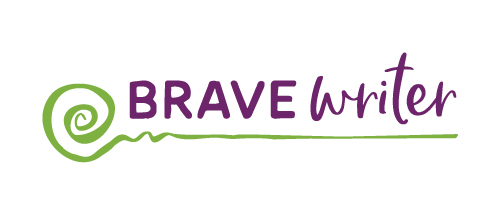Welcome to "Tea with Julie," a weekly missive by me, Julie Bogart. My wish is to give you food for thought over a cup of tea to enhance your life as an educator, parent, and awesome adult. Glad you're here. Pinkies up!
P.S. Was this email forwarded to you? Add yourself to the list and get your own!
Cincinnati, October 2, 2021
Hi Friend,
One of our Brave Writer moms asked about teaching writing formats to her daughter who is now comfortable with writing. Does the Brave Writer philosophy eschew with formats all together?
Is there ever a time to:
- identify a topic sentence,
- explain a descriptive paragraph,
- teach the difference between argumentative and narrative paragraphs?
The answer is most assuredly, “Yes.”
Writing involves the use of formats as surely as speech does. We often follow unconscious formats as we speak. We greet each other according to conventions we learn along the way, we answer the phone and give directions according to formats we’ve internalized after years of talking and emulating other speakers. Eventually, some of us make an effort to learn how to give a speech or business presentation. We are trained to make a sales pitch or to close a deal.
All of these speech formats come long after we’ve internalized speaking as a primary means of communication.
It works the same way with writing.
As your young child shows confidence and competence, it is perfectly fine to give simple writing formats a whirl.
For littles, often a physical container provides the format or structure:
- writing captions on posters or sticky notes
- stapling together pages of a story or putting them in a binder (for example, you might jot down the child's story, the child draws illustrations then you put it all together)
- creating lapbooks
As kids mature, the writing itself becomes the container—lists, letters, recipes (most students aren't ready for reports and essays till junior or senior high).
When faced with formats, though, the tendency is to forget about:
- writer’s voice,
- freedom,
- saying something that is meaningful rather than regurgitating what is expected.
My advice is to see formats as a new tool to help shape your child’s original quirky self into a recognizable format.
In other words, if you are writing a poem, rhyme is a common feature of poetry. Putting your thoughts into meter and end rhyme is part of the fun of that writing style. Likewise, if the writer’s topic lends itself to description, then focus on sensory observations and organize the writing around a journey through the senses rather than falling into the temptation to narrate an event or to explain how to peel an orange (rather than describing it). A descriptive paragraph is a paragraph whose focus is description…that means that it needs to show me, rather than tell me.
Keep in mind, a format in writing acts as a kind of container for the original thoughts and metaphors that the writer brings to the topic.
Get lots of ideas, images, words, thoughts out onto the page before imposing a format. Then, take the format and see how the ideas your writer has put forth can be organized to suit a specific format. Rearrange, embellish, adapt, and shuffle until the writing is both an expression of a person and fits into the desired format.
Warmly,

P.S. Catch up on all the “Tea with Julie” emails here!
Julie Bogart
© 2021 Brave Writer LLC™
help@bravewriter.com

.